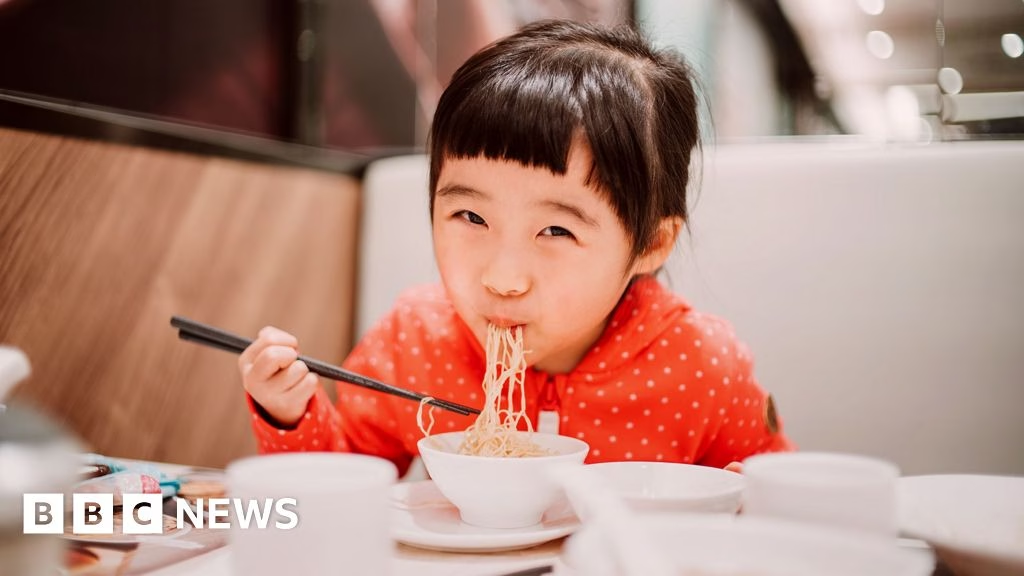4438(80)/48231_9111248_10_11.jpg.webp) Getty Images
Getty ImagesGrilled fish pie on a superbed of numbing chillis and Peppercorns hailing from China’s south-western Clty, Chongqing; cumin-laced lamb skewers from Xinjiang in the far north; and fiery rice noodles flavoured with snails from the famed rivers of Guangxi in the south.
All of this on a walk down Liang Seah Street in Singapore.
Chinese food is having a moment outside China, driven by huge success and intense competition back home. And nowhere is this clearer than in Singapore, where ethnically Chinese people make up more than three-quarters of the multicultural population.
The trend is not surprising given that Chinese soft power seems to be on the rise – think viral Labubu dolls, humanoid robots and futuristic cities that are impressing travellers.
Centuries-old and sophisticated, Chinese cooking is not among Beijing’s list of priorities for turning the country into “a powerhouse in culture” by 2035.
And yet, as an increasingly authoritarian China tries hard to win the world over, a sumptuous table may just be its most effective, and underrated, draw.
First stop: Singapore
Luckin, China’s answer to Starbucks, opened its first overseas store in Singapore in March 2023. Two years on, there are more than 60. Last month, the chain made its US debut with two New York stores.
Five major Chinese brands, Luckin included, currently run 124 outlets in Singapore, double the number they owned in 2023. It’s hard to miss the evidence: huge, bright ads of chilli-laced dishes and, sometimes, Chinese idioms, in malls, buses and subway stations.
From established chains to mom-and-pop stores and chic restaurants that challenge tired stereotypes, they have all been taking off here before leapfrogging further afield, to elsewhere in South East Asia and then across the world.
Succeeding in Singapore is “a proof of concept for later expansion, convincing potential investors that the chain is ready to go global,” says Thomas DuBois, a historian of modern China.
/live/c464bf70-7409-11f0-a5de-31c97486a8f4.jpg.webp)
It’s an easy enough place for new restaurants to set up shop. And it is diverse, which makes it a great test kitchen for very different palates, from South Asian to European.
And importantly, Singapore is a travel hub where, Mr Dubois says, eating is almost like a national pastime: “People go to Singapore to eat.”
And what they will find is menus that go beyond the ubiquitous dumplings and hot pot. The entrepreneurs behind the new Chinese culinary wave want to show people just how vast and diverse China is. And hey cannot fake it.
Many of the visitors to Singapore are ethnic Chinese – not just from China, but from Bangkok, Kuala Lumpur, Manila, Jakarta and so on – with a sophisticated understanding of Chinese cuisine.
There is no one kind of fiery, says Claire Wang, the marketing manager for Nong Geng Ji, a chain from Hunan in central China, which is famous for its spicy dishes.
Hunan’s fare has “a tangy aftertaste achieved through fermented chilli peppers”, she says, unlike “Sichuan’s numbing-spicy or Guizhou’s sour-spicy”.
After launching more than 100 restaurants in China, Nong Geng Ji opened its first overseas stop in Singapore in late 2023. It has since set up six more here, five in Malaysia, one in Canada, and is now eyeing opportunities in Thailand, Japan, South Korea and the US.
It’s certainly proof of the growing appetite for chillies, especially the Chinese kind – a trend that would please China’s former leader Mao Zedong. Born and raised in Hunan, he believed, “You can’t be a revolutionary if you don’t eat chillies”.
Finally, ‘proper’ Chinese food
For the less revolutionary among us, there is plenty more on the table: steamed buns, red meats, preserved vegetables, rice, seasonal stir-fries and delicately-flavoured seafood.
It’s quite the spread compared to the “Chinese food” much of the world has become used to, especially in the West – food cooked up by Chinese immigrants in the 19th and 20th Centuries, whose scrubby, nondescript restaurants were often seen as low-brow.
/live/0c2037f0-7427-11f0-ab85-c1ec8d2f110b.jpg.webp)
Source: https://www.bbc.com/news/articles/cy4dk1z02w7o?at_medium=RSS&at_campaign=rss








